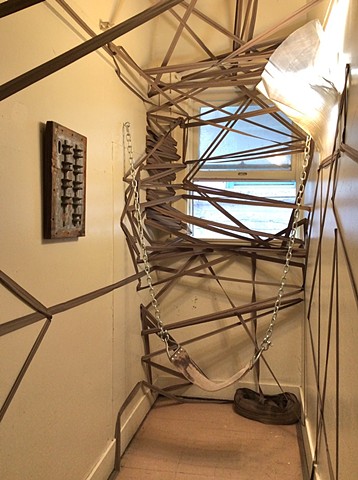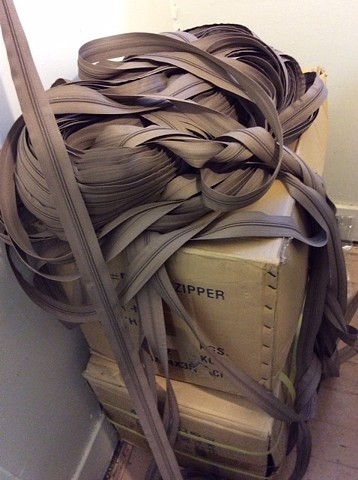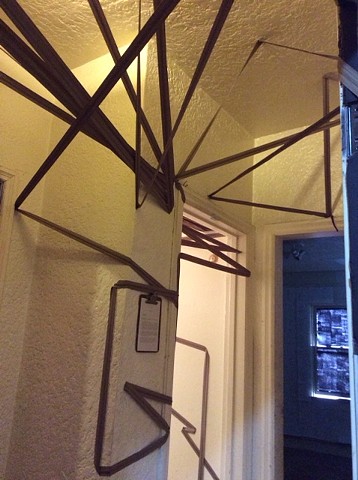Glimpse
One mile of continuous industrial zipper. Divested of its usual soft substrate, it becomes a form of mark, one that divides space, directs sightlines, and interacts with the other art installed in this temporary exhibition in a building slated for demolition, a former beloved residential hotel for the impoverished that will be replaced by a gleaming arena, a municipal income machine. Beginning as a looming mass hanging in the lobby entrance, the zipper mile zigs and zags through 5 floors of hallways, rooms, and stairwells; dominates a 3rd floor closet; exits and then returns through a roof access door; and finally terminates in another mass hanging over the exterior fire escape.
Read more about Art Hotel HERE.
Zippers create openings and closures we process as inherently temporary and controllable, much like architectural fenestrations such as doors and windows. When we zip or unzip -- clothing or tents or sleeping bags -- or open or close a door or window, we activate a reassuring environmental control, with an implied expectation of future ability: to reverse direction, to make controlled adjustments, to secure ourselves or our belongings.
As objects, zippers are ordinary, ubiquitous, and ignorant of class distinction. Their close alternating pattern of rounded teeth is repetitive, reliable, smooth at best and a trap at worst. Its sound is soothingly dull, a familiar reassurance. It’s both physically effective and simultaneously illusory.
Control can fail at any time, and you can lose the security at any moment. Pull back; pull forward. Open; close. Pass; obstruct.



